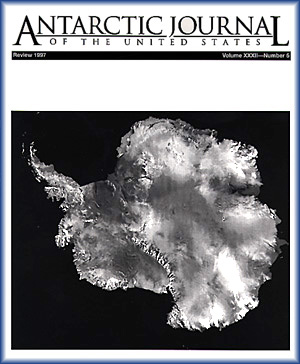
Cover photograph
Using satellite images collected between 1980 and 1994, U.S. Geological Survey remote-sensing scientist Pat S. Chavez, Jr., and a team of specialists have compiled a digital mosaic of the antarctic continent. By gathering images from a region on one pass of the satellite and then taking a wider swath of the same area on a different satellite pass, cartographers were able to pinpoint surface details. Images taken over the 14 years enabled them to track changes and capture cloud-free images of the entire continent. For more information and to view additional remote sensing images visit the "USGS TerraWeb: Satellite Image Map of Antarctica"

(2,031KB)
Chapters
(5,305KB)
(5,964KB)
(3,184KB)
(7,326KB)

The sea-ice zone around Antarctica is one of the most dynamic biological systems on Earth. In addition, the antarctic sea-ice fluctuations--the ice cover more than doubles in the austral winter and retreats again each spring--control global ocean temperatures and global climate. Because global warming could cause a significant reduction in the extent of the sea ice, the potential climatic and biological impacts of a change could be substantial.
To understand how ice forms in the Southern Ocean, researchers conduct laboratory tests to control such elements as temperature and wave motion and to calculate how variations in each affect the transition from grease ice to pancake ice to pack ice cover. Two articles about laboratory studies appear in this issue of the Antarctic Journal. On pages 53-55, Gregory H. Leonard, Hayley H. Shen, and Steven Ackley describe the results of studies conducted at the hamburg ship Model Basin in Germany. In an article reprinted from the December 1997 online issue of the Antarctic Journal, Susan Frankenstein and Hayley shen describe similar experiments performed at the U.S. Army Cold Regions Research and Engineering Laboratory in Hanover, New Hampshire (pages 237-239). Laboratory observations such as these complement filed studies to help scientists understand the dynamics of the largest mass of ice on the planet and how changes in the global climate might affect the annual growth of ice cover.
